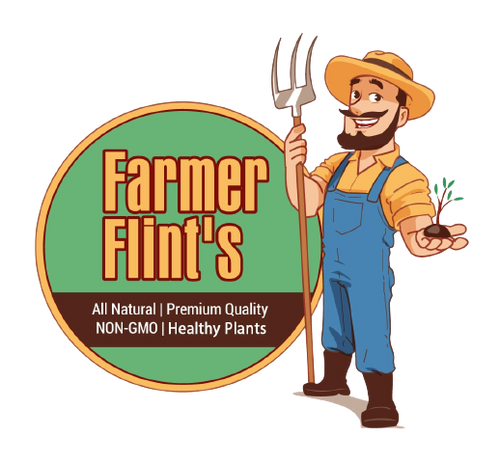Introduction
Welcome dear readers, my name is Michael and I'm passionate about agriculture and technology. In this blog post, I want to discuss an exciting area of farming that is Precision Agriculture and how it is positively impacting crop yields around the world. Agriculture has come a long way from the manual methods of the past and technology is now playing a bigger role in optimizing crop production. Precision farming leverages data collection tools, software and analysis to make informed decisions that maximize efficiency and sustainability. Let's dive into the details to understand how precise farming techniques are benefiting farmers and our food supply.
What is Precision Agriculture?
At its core, precision agriculture is a management approach that utilizes technology to observe, measure and respond to intra-field variability in crops. With precision farming, crops are treated as individual management zones rather than as a uniform whole field. This allows inputs like water, fertilizer and chemicals to be varied based on the specific needs of different areas within the same field for optimum effect. Some key aspects that define precision agriculture include:
- Site-specific soil and crop data collection: Tools like GPS-enabled soil sampling probes, aerial imagery, sensors and yield monitors are used to collect detailed data on soil properties, crop health, moisture levels etc. at high resolution.
- Data analysis and map generation: The collected data is analyzed using specialized software programs to generate prescription maps, which identify management zones based on variability factors.
- Variable-rate application: Farm machinery is equipped with auto-guidance and variable-rate controllers that allow inputs to be applied only as needed in each management zone indicated on the prescription maps. This prevents over or under-application.
- Decision support: Advanced analysis of historical and real-time data helps farmers make informed agronomic decisions regarding hybrid/variety selection, tillage practice, irrigation scheduling etc. customized for their fields.
- Continuous monitoring and evaluation: Precision systems keep monitoring crops and evaluating the impact of management practices to further optimize inputs and productivity over seasons.
The goal of precision agriculture is applying only the necessary amounts of crop inputs precisely where they are required by the plants. This approach improves yields, lowers input costs and protects the environment by reducing overuse of chemicals, fertilizers and water. Let's explore the major technology components and how they facilitate precise farming.
Precision Agriculture Technology
Some key technologies that power precision agriculture practices include:
- Global Positioning System (GPS): GPS provides the geo-spatial framework for precision agriculture by assigning coordinates to all field data and machinery. GPS receivers mounted on tractors, applicators or drones record their precise location while collecting/applying inputs to link information to specific areas.
- Sensors and Imagery: Sensor and imaging technologies help observe intra-field variability. Optical sensors measuring light spectra analyze plant health and deficiencies. Thermal sensors detect moisture stress. Imagery from drones/satellites capture field conditions at high resolutions.
- Soil Sampling Tools: GPS-guided probes automatically collect large numbers of soil samples from precise locations for analysis. Parameters like pH, nutrients, organic matter etc. are mapped.
- Yield Monitors: Attachments on harvesters record yield data geotagged to location. This reveals low/high productivity zones and informs soil sampling and treatments.
- VRT Control Systems: Variable-Rate Technology (VRT) controllers installed on applicators enable rate changes based on prescription maps. They divide fields into small management units for site-specific application.
- Fleet Management and Farm Management Software: Specialized computer programs integrate field data, analyze patterns, generate prescription maps and allow equipment monitoring. Mobile apps enable convenient access and documentation.
- Auto-Guidance Systems: Precision steering and swath control help machinery like tractors and sprayers navigate fields and apply inputs with pinpoint accuracy based on maps and zones.
- Sensors on implements provide inputs like seed/fertilizer drop, spray deposit rate in real-time for efficient operation. Connected farm technologies like IoT are also enabling remote monitoring and management of equipment and crops.
This suite of technologies allows each piece of collected information to be cross-referenced for making informed agricultural decisions. Let's see how they are enhancing productivity and efficiency for farmers.
Impacts on Crop Yields
By allowing targeted and customized crop management across variable field conditions, precision agriculture is delivering significant impacts on yields:
- Optimized Use of Inputs: Precisely applying only as much water, fertilizer, seeds or chemicals as needed saves 10-30% on inputs depending on field variability. Cost savings are reinvested or increase profits.
- Increased Yields: Studies show precision farming increasing average yields by 5-15% compared to conventional blanket treatments that ignore spatial variability. Optimum nutrition enhances plant health and maximizes genetic potential.
- Better Return on Investment: At a few dollars per acre, precision systems typically pay for themselves within 2-3 years through increased yields and reduced costs. Long-term benefits keep accruing with experience and historical data.
- Improved Soil Health: Site-specific liming based on pH maps corrects imbalances. Targeted fertilization meets crop needs without over-application that harms microbial communities. Healthier soil structure supports sustainability.
- Protection Against Stress: Variable-rate irrigation prevents waterlogging of low-lying areas and ensures no zones face moisture stress. Precise disease/weed control protects yield potential.
- Maximized Profitability: Higher yields combined with input savings from precision agriculture increase net returns per acre substantially. This enhances whole-farm efficiency and profit margins.
- Climate Change Resilience: Tailored management equips crops to perform optimally even in challenging conditions like droughts or floods. Data-driven decisions future-proof agriculture.
Through hundreds of studies worldwide, consistent increases of 10% or more in yields are attributable to modern precision farming systems that leverage detailed data capture and analysis compared to broad-acre practices. Let's explore some real-world examples.

Case Studies of Impact
University of Minnesota researchers saw a 17% jump in average corn yields across 12 research sites over five years by using precision soil sampling and variable-rate fertilizer application tailored to match soil test levels compared to uniform fertilization.
In Illinois, a 330-acre cornfield demonstrated a 5 to 15 bushel per acre yield increase through zone sampling, pH corrections and variable nitrogen application based on soil organic matter and yield potential. The fine-tuned program generated an additional $25,000 in profits.
A Nebraska farmer reported average 14 bushel per acre yield gains in corn and soybeans on his 3,500 acres since switching to precision soil sampling, nutrient management and auto-guided field operations 10 years ago. Annual savings are estimated at $150,000.
Spain-based trials revealed up to 15% more wheat, barley, corn and alfalfa yields through precision fertilization based on crop reflectance sensor readings which ensure optimum soil nitrogen levels are maintained season-long.
In Australia, a study across 75 sites demonstrated 2-5 bags per acre higher wheat yields from precision soil sampling, fertilizer recommendations and variable-rate nutrient applications customized for pH, nitrogen, phosphate and potash deficiencies in each paddock.
These results consistently prove precision agriculture enhances agronomic efficiency at both research stations and commercial operations worldwide. As farmers gain experience over time optimizing their precision systems, the yield and economic returns continue increasing sustainably. precision methods strengthen agriculture's capacity to nourish a growing global population.
Enabling Sustainable Intensification
With world food demand projected to rise significantly by 2050, increasing crop yields while protecting natural resources is critical for future food security. Precision agriculture provides an effective way to sustainably intensify production through optimized inputs and data-driven decisions. Some aspects enabling more sustainable farming include:
- Reduced Environmental Impact: By avoiding over-application of fertilizers and chemicals, precision mitigates issues like pollution from agricultural runoff into groundwater or nearby water bodies. Less waste protects the environment.
- Conservation of Resources: Targeted use of inputs like water, fertilizers and seeds as per actual field variability requirements promotes conservation of scarce resources for future needs.
- Climate-Smart Management: Data on spatial and temporal variability guides crops to perform at their genetic potential even in changing climate conditions with precision adaptations. This builds resilience against production shocks.
- Soil Health Preservation: Precisely meeting plant nutrient demands without overdoing maintains soil microbial balance for long-term fertility and carbon sequestration. Soil quality remains sustainable.
- Pollinator Protection: Reduced and more judicious use of pesticides through precision application focused only on problem zones benefits biodiversity like pollinators essential for crop production.
- Renewable Energy Options: Infrastructure for data collection and management offers scope for integrating renewable energy through solar or small wind setups, further adding to sustainability and cost-savings.
Overall, precision farming allows producing more food from the same land area while lowering agriculture's environmental footprint - a win-win approach supporting sustainable intensification goals globally. As technology solutions continue advancing, their positive impacts will multiply.
Challenges and Future Outlook
While precision agriculture clearly boosts yields and economic returns in most field scenarios, its widespread adoption does face some challenges:
- High Initial Investment: Precision equipment, software programs and data management demand substantial upfront capital costs, which smallholder farmers may find difficult to access.
- Learning Curve for Operators: Skilled labor is needed to operate precision systems optimally. Developing technical expertise everywhere requires awareness building and training support.
FAQs
What are the main benefits of precision agriculture for farmers?
The top benefits include increased crop yields of 5-15% on average, savings of 10-30% on inputs like fertilizer, fuel and chemicals, improved soil health and protection of the environment through optimized input usage. Precision farming also enhances farm profitability through higher returns per acre of cultivated land.
What types of crop data can be collected using precision tools?
A wide range of crop data can be captured including high-resolution aerial imagery, yield maps, soil nutrient and moisture levels, plant health indicators, temperature and humidity readings. Precision soil probes provide detailed data on parameters like pH, organic matter, nitrogen, phosphorus and potassium levels at close intervals within fields.
How does variable-rate technology work in precision systems?
Variable-rate technology (VRT) controllers installed on farm implements divide fields into small, precise management zones based on prescription maps generated from crop and soil data analysis. These controllers then adjust the application rates of inputs like fertilizer, seeds or chemicals on-the-go based on the needs of each zone to deliver only the required amounts precisely where needed.
Can precision techniques be used on small farms too?
While initial costs may be relatively higher for small farms, many precision services are now also available custom hired which lowers upfront investment needs. Basic systems involving GPS-guided soil sampling and variable-rate fertilization are suitable even for small landholdings. With financing options and service provider models, precision is viable for farms of all scales done in a staged manner.
What precision tools help with data management on farms?
Specialized farm management software programs offered by various technology providers help consolidate field data from different sources, perform analysis, generate prescription maps and provide useful reports. Wireless data transfer from machinery to mobile farming apps also aids seamless data access and documentation on-the-go or remotely for flexible decision making.
What challenges still remain in precision agriculture adoption?
Key ongoing challenges include high initial capital requirements for advanced precision equipment and solutions, need for technical training support to develop farm labor skills, limited infrastructure access in remote communities, data management and cybersecurity concerns, and ensuring affordability of precision services for smallholder farmers through innovative business models. Addressing these will sustain wider adoption globally.
Conclusion
In conclusion, precision agriculture leverages modern technologies to boost agricultural productivity and sustainability in an era of rising global food demand. Site-specific practices optimize crop inputs based on spatially varying field conditions, improving yields by 5-15% on average according to research data. Precision farming also enhances farm profits through savings worth 10-30% of input costs and continuous optimization over seasons. While adoption faces barriers, the benefits have made precision techniques common on commercial farms worldwide. As technology solutions advance further, their positive impacts will multiply, supporting precision to play a crucial role in meeting future food needs through climate-smart, efficient agriculture customized for every field.


